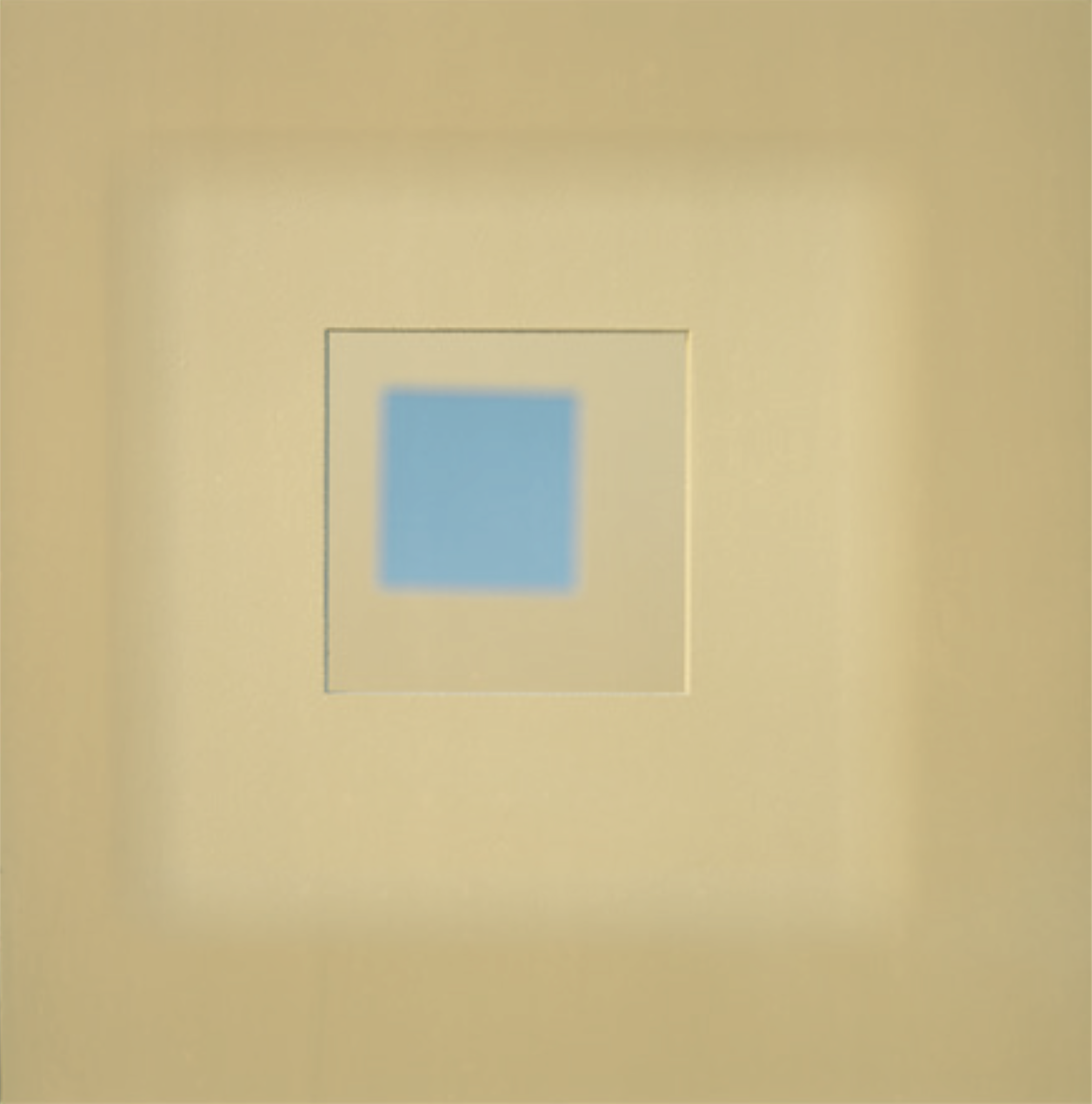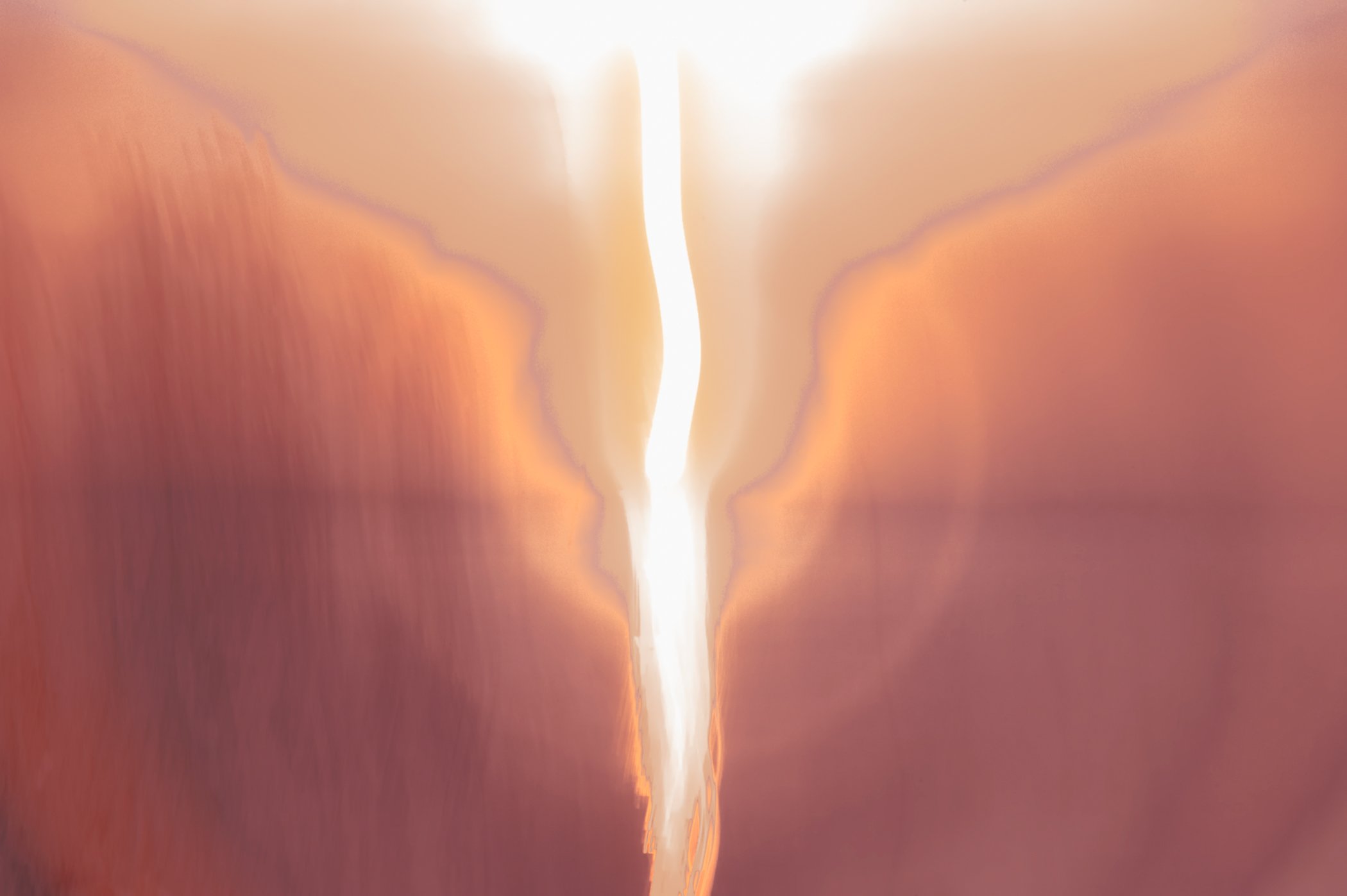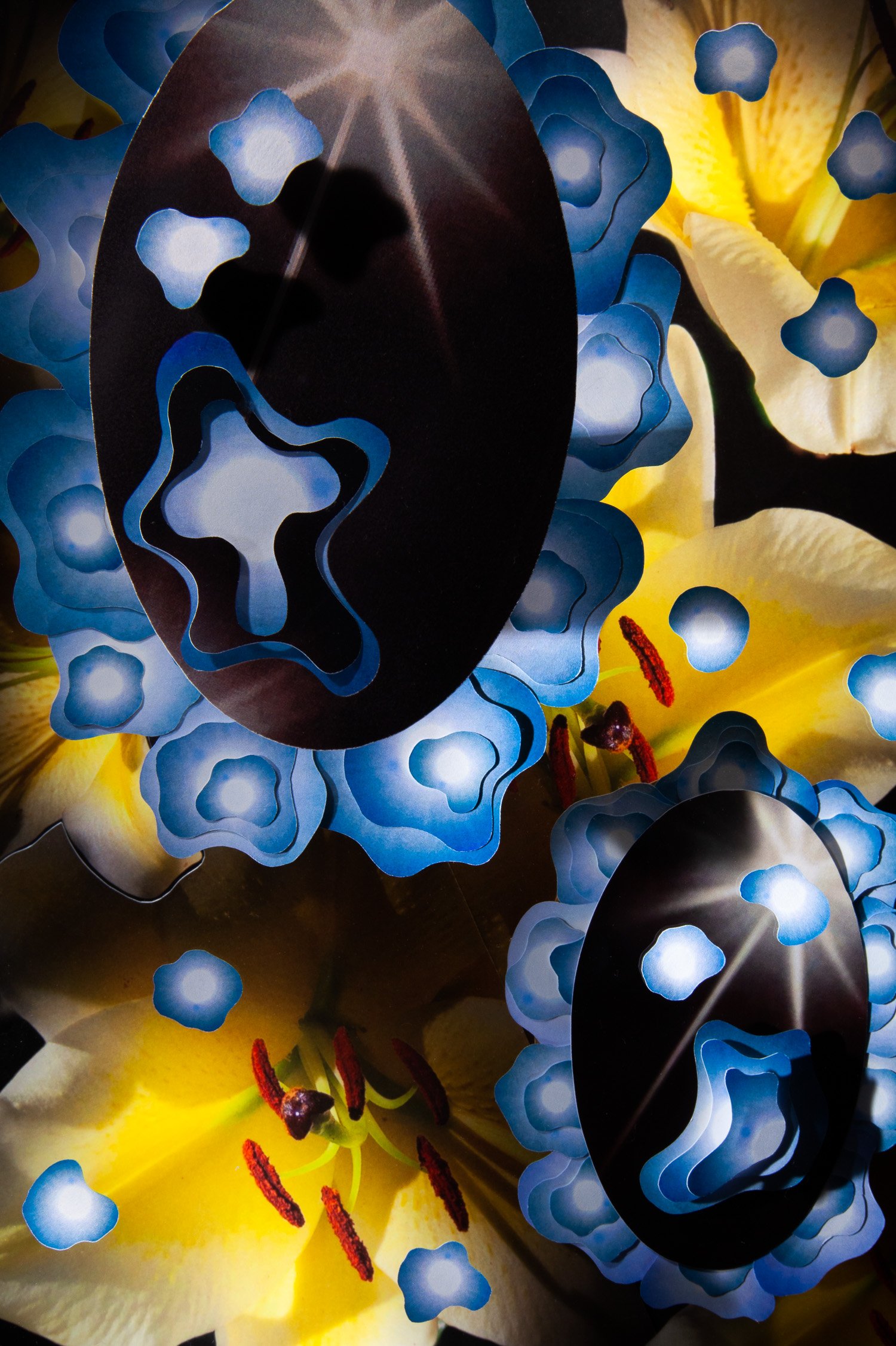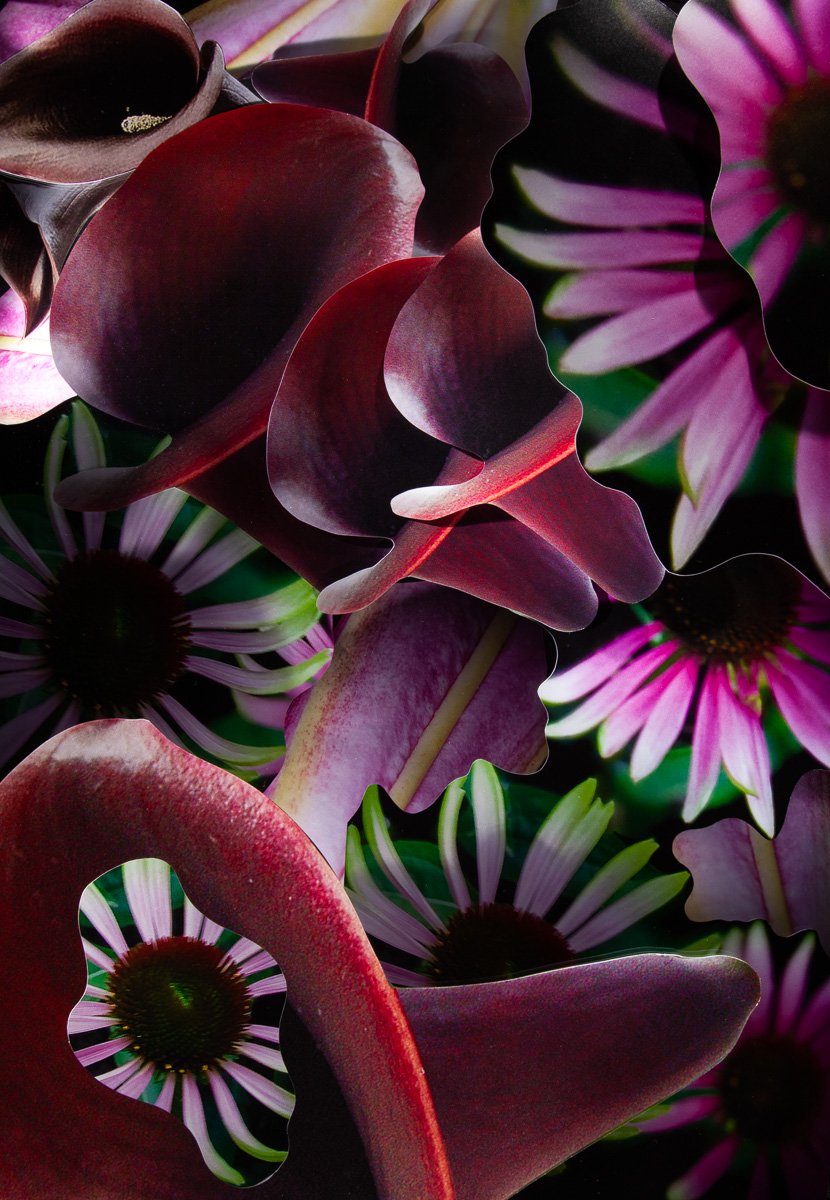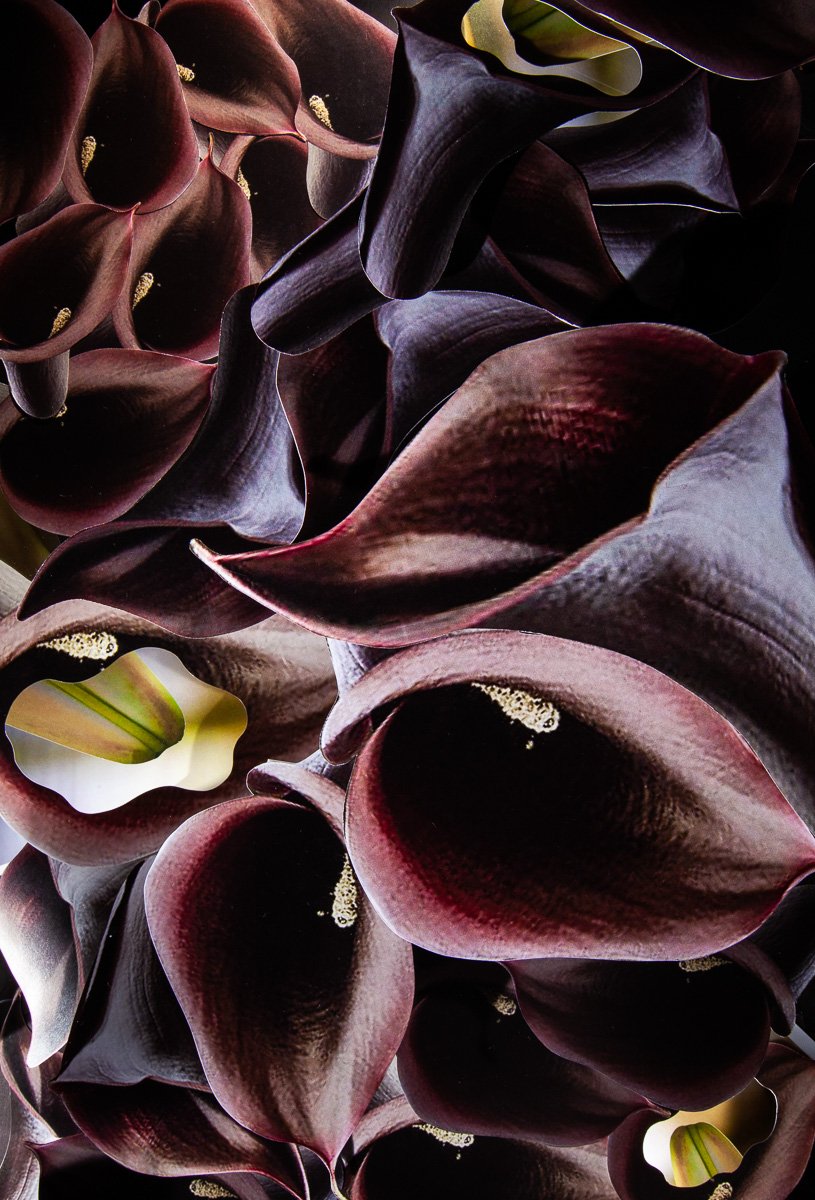Constructed & Found
July 1 – August 23, 2022
Opening Reception
July 7 • 5:00 - 8:00pm
Gallery Talk
August 5 • 5:00 - 8:00pm
Music by Isaac van Voorst van Beest
ART REVIEW: 5 PHOTOGRAPHERS, 5 APPROACHES IN PORTLAND SHOW
by Jorge S. Arango
Brendan Bullock, Boatbuilder's Geometry, Camden, ME, 2022, Silver gelatin print, 1/1, 9.75 x 9.75 inches
$1800
After my father passed away, I remember going into his over-crowded woodshop and looking at all the things he’d left behind. Curly maple shavings still lying next to a plane, dimensions and mathematics scrawled on the backs of envelopes, coffee cans full of nuts and bolts.
When I walked into an abandoned boathouse in Camden Maine on a commercial assignment recently, I found a strikingly similar scene, with even more of an aged patina. It was as if at noon on a Tuesday in 1990, everyone had gone out for lunch and never come back. Sawdust. Cobwebs. Blueprints. Plywood jigs and cutouts. Unfinished projects. In the office, I pulled out the top drawer where the draftsman had worked. Over a few decades of mice passing through the drawers, his bench brush had had its bristles broken, chewed on, and scattered around. Seeing them so beautifully distributed felt like finding a treasure.
For years I have made this kind of abstraction while en route to making other work. The Cleveland Rooftop piece in this series was made while photographing the Republican National Convention. The wall detail from Tanzania was made while spending a couple weeks photographing within a rural Maasai community. It didn’t occur to me until recently that the human hand always plays a role in these compositions I perpetually seek, directly or indirectly. How the mice scattered the bristles is the beautiful part, but they wouldn’t exist if a man hadn’t left a brush in the drawer in the first place.
I’m spending more time these days thinking about what we all leave behind – artifacts, traces, influences… and the way in which even the mundane, given enough time to sit and age, can transform into something profound. – Brendan Bullock
Brendan Bullock is a fine art photographer based in Bowdoinham, Maine. A decade of work in the world of fine art galleries, spending time around paintings and works on paper, ultimately inspired very specific interests within the realm of photography. Primary among those are creating unique prints, mixing mediums, combining digital images with historic printing processes, and experimenting with organic toners. A portrait photographer by trade, Bullock focuses his fine art work largely on abstraction, sourced either in nature, or found in man made materials.
Constructed & Found: musing on process.
Whenever a photographer can’t help but make an image, I’m interested. Sometimes they’re being paid for their work, or supposed to be working on something else. It’s always the images on the periphery of their project or assignments that are important and intriguing—the aperture into their brain. The actor Jeff Bridges makes photographs while on his film sets; They’re mostly unrelated to the work he’s hired to do. Instead they’re about what it feels like to work or collaborate with people, the process, and the images often become books. My favorite one is The Dude and the Zen Master. Sometimes the process takes on its own proportions and becomes the work.
The title of the next exhibition, Constructed & Found refers to the process of our photographers’ image making—they are either constructing images or finding them.
Brendan Bullock is happening upon photographs because his brain is looking out for compositions—he can’t help it. As artists, we carry ourselves with us everywhere we go. Bullock is traversing the world on commercial documentary assignments and collecting inescapable abstract compositions whether he’s in Tanzania, East Africa on the tarmac, or looking closely at cement heaves from the frost in Camden, Maine. His editing process and technique is manifested in beautiful, under ten inch silver prints. The special and particularly warm and muddy brown he gets from the paper rings true to him. The juxtaposition of the blacks that make up the lines of the compositions are what’s interesting about this work. It looks like camera-less photography but it is made with a lens. I saw this work two years ago and I’ve been thinking about it ever since. These photographs, or work like it, could be what he makes for the rest of his life. I would remain interested.
Luc Demers photographs are a response to the work of Joseph Albers. Albers, a Bauhaus painter, is best known for the work he did in color theory in the 1960’s. He was investigating how the viewer sees and perceives color combinations. Demers mimics the form and content of Albers work and turns it on its ear. He uses the ever changing natural light and time to capture and juxtapose color relationships. The process is time sensitive, must require infinite patience, and is utterly fascinating. Ambient is the title for this ongoing investigation (2015–present) and the results are as thought provoking as they are beautiful. Are these found or constructed? Are light and time found? Just wait till you see the studio images that illustrate making of these photographs. (www.mainemuseumofphotographicarts.org/constructed-and-found)
Damir Porobic is a master print maker. He’s a photographer too, but his meditation on the printing process and how the form supports the content of the work is what’s so fascinating. The images we’re sharing in this exhibit were made in 2014 and he said recently, “I’m not in a hurry to part with these.” Time, memory, meditation, WORK (chop wood–carry water), haunting, and suffering are what’s at stake here. This is an ongoing body of work that conveys his life experiences as a former Yugoslavian and new American. It’s what he’s coming to terms with and what defines his identity. (His boat’s name is Fugee which means refugee in his native language.) Any one of his images takes two weeks to print. It’s a registry of a few dots from an inkjet printer laid over and over and over until the registration makes an image that is almost a ghost of the original form. It looks a bit like a pointillist painting in the end, but softer with evidence of the labor it took to get there. The process is repeated again and again. It reminds me of another printmaker friend, Greg Shattenberg who has been tap dancing for 20 years on the side (of printmaking). We talk about registry or the sound that his shoes make—the repetition, the pace and beat of the dance. We’re really talking about timpani and exertion. Damir Porobic might also be a percussionist whose sound comes from the past. His work is precise and random at the same time, yet somehow the complexity of the process gets at the essence of the subject. (I’m sitting here with an image of an American flag he made in the weeks that led up to his citizenship. It really makes us question and meditate on what the symbol means.)
This reminds me of Beth Orton’s so-called failed study and embarrassment of trying to learn to meditate at a fancy Buddhist retreat. A year later that experience led to the album, Sugaring Season. We are taking it all in whether we can utilize it right away or not. We carry around our experiences and it sometimes plays out later.
John Woodruff is a biologist as well as a photographer. He creates biomorphic forms out of cardboard then paints and lights them. It’s the photograph in the end that is what he’s really after. Now, with the digital universe in place, why would he build elaborate compositions out of cardboard to construct imagery? He’s part exacting sculptor and part installation photographer. This new work has layers of flowers and a Baroque atmosphere. It’s about formal elements but also the natural and constructed world of scientific presentation. He is an architect who carefully lays out complicated planes that exist on glass layers which he lights, studies, and captures digitally. This kind of influence makes me think about Henry Moore’s sculpture. He was English and inspired by the landscape of his childhood—especially the sheep in the distance. His forms are biomorphic and he repeated them over and over. They are HIS forms and exist in HIS consciousness. John Woodruff is meditating on plants, organisms, and things that feel like we might encounter in a high school biology class. It’s that artist brain again! Our influences play out in our work and its concerns. We are on an intimate but large-scale trip with Woodruff, the work is unique and makes us think about what kind of brain he has; really exacting, particular, and fascinating!
— Denise Froehlich, Director, MMPA Gallery
Luc Demers, Ambient 17 2, 2017, Archival pigment print, 16 x 16 in.
Ambient
I am interested in how we use photography to understand what we see, and how we see. In my current project I am creating color studies of ambient or available light. After much experimentation I have designed and created an adaptable array of white panels with square windows cut through them to gather and record light of different colors from different directions. In single exposures on color film I am capturing available light reflected on the array, arranged to juxtapose the different colors of the atmospheric light. The resulting photographs are a record of the colors of the ever changing light and an opportunity to witness the complexity and subtlety of our visual world.
– Luc Demers
Barbara Goodbody
Barbara Goodbody, SUNRISE I, 2009, Inkjet Print, 36.5 x 49.5 inches Purchase: $3500
Barbara Goodbody moved to Maine in 1973 after working on Senator Edmund S. Muskie’s presidential campaign where she met many wonderful people from Maine. Goodbody was immediately embraced by the community in Portland and, while raising three children, she became active in Portland Junior League and helped found Big Brothers Big Sisters. In 1986, in mid-life, she found her personal passion in photography inspired by attending the then
Maine Photographic Workshops (now Maine Media Workshops) in Rockport, Maine. Goodbody has exhibited at venues such as Addison Woolley Gallery in Portland, Vox Photographs in Portland, College of the Atlantic in Bar Harbor, the Art Gallery at the University of New England in Portland, Center for Maine Contemporary Art in Rockport, and at UNESCO in Paris, France for the International Women’s Day celebration. Her work is in the Ernst Haas Memorial Collection at Portland Museum of Art. She is a member of the advisory board at Maine Museum of Photographic Arts.
Barbara Goodbody, SUNRISE VII, 2009, Inkjet Print, 36.5 x 49.5 inches, Purchase $3500
Damir Porobic
Damir Porobic, Untitled (Casco Flag from Memory), 2014, Archival pigment composite print, 28 x 37 inches, edition 1/10, NFS
Memory Series
“Victor Burgin, writing on photography, comments: “More than any other textual system, the photograph presents itself as ‘an offer you can’t refuse.’” This is so because the viewer is seldom asked or expected to be a critical reader of a photograph. Under a way of seeing things that can be described as realist, we are not, as readers, expected to ask how this reality, or this image, came to be. Or, to put it in slightly more theoretical terms, where the signifier is thought to be identical to a preexisting signified, there is hardly any interrogation of the process through which signification takes place. As John Tagg states, “In realism, the process of production of a signified through the action of a signifying chain is not seen. It is the product that is stressed, and production that is repressed.”
The works presented in the exhibition stem from the Memory Series, a process-based “photo-composite” print series that intends to meditate on structures, behaviors and nature of our biological imaging found in our memory and our dreams. In order to explore how visual image forms via experience, I have been for years now photographically documenting everyday objects in different times, locations and varying circumstances. The multiple recordings/documentation would ultimately be reduced to minimal opacity (practically made transparent) and were digitally all printed on top of each other by re-running single/same piece of paper through an inkjet printer each time the next image-sequence was being printed. The single piece of paper would go through an inkjet on average of some 40 times to create a “composite image” that is neither singularly photographic, nor hand generated, but formed from the process of layering minimal and individually abstract information of different views and time moment sequences of single subject matter. The final results are images with a prevailing sense of fleeting and vague dimensions, multi-view perspectives, and general loss of linear and/or photographic memory.
The Memory Study Short is part of an ongoing studio interest in creating art that looks for intersections and similarities in and between the contemporary digital technologies, and our own biological capabilities for visual imaging.
Considering that artists have throughout the history reflected and taught us on nature and structures to our visual experience, this series of works extends that tradition into the realm of the cognitive and subconscious, connecting and ultimately speculating on the possible relationships between the photography and contemporary imaging hardware or software, and the universally personal phenomenon of visual structures within our memories and within our dreams.
In the Transforming Image series, the memory metaphor is rather literally applied to the original photograph by getting it repeatedly re-photographed, each time the following image being generation removed and experiencing the subtle but also linearly exponential loss. After the laborious process of re-photographing many consecutive individual states, in this instance the resulting suite of final photographs were rearranged into a looped mini digital film.
— Damir Porobic
Damir Porobic teaches variety of University of Southern Maine’s Art Department introductory to advanced studio courses ranging thematically from Foundations’ courses in Drawing and 2-D Design, intermediary, upper level and advanced Printmaking Digital Art and Design and Photography courses, and ocassional Senior Seminar professional practice course in Studio Art.
Damir Porobic’s professional experience covers previous teaching in art at several higher education institution prior to arriving to USM, fine art industry practice in interdisciplinary art, 2-D and 3-D design and fabrication, master printmaking and print publishing, curatorial practice, and more.
Born in the city of Mostar in Former Yugoslavia (presently Bosnia and Herzegovina), Porobic moved to the United States at the age of seventeen, and upon graduating High School received a Bachelors of Fine Arts from Kansas City Art Institute in Kansas City, MO, and a Masters of Fine Arts from West Virginia University in Morgantown, WV, where he majored in traditional and contemporary printmaking practice, and the alternative new media approaches to fine art making.
I fell in love with photography through the Polaroid camera. Its immediate results were addictive.
Eventually my father gave me his 35mm Exakta. It had an inherent film transport issue and would frequently overlap at least part of two frames. What some viewed as a mistake was to me the find of a lifetime. To this day I continue to use, at least in part, the concept and power of overlapping images.
My photographs are about layers, illusion of depth, color, shape/form, restless energy and beauty in the simplest of things. To understand in more detail these aspects, upon graduation I took a position as a studio photographer and, a bit later, as the owner of an architectural photography studio. In both disciplines I gained extensive knowledge in lighting, composition, vantage points, depth of field and, most importantly, how to make that which I was photographing more provocative than it was.
For the last twenty years or so, I have used paper as the underlying element for creating my images. The paper is almost always cut into biomorphic shapes. My newest series is based on flowers I have shot over the last year. They are printed as xeroxes of varying sizes and then cut by hand from their respective backgrounds to segregate the flower itself. The flowers are then composed on elevated glass layers, which allow me to light each level independently.*
My inventive and poetic compositions embrace color and form and explore the illusion of depth resulting in visually charged, immersive photographs that challenge the viewers perception of what a photograph should be. They linger at the intersection of painting and photography, imagery and abstraction.
All of my photographs are created and produced in the studio. They are non-electronic photographic compositions.
– John Woodruff















